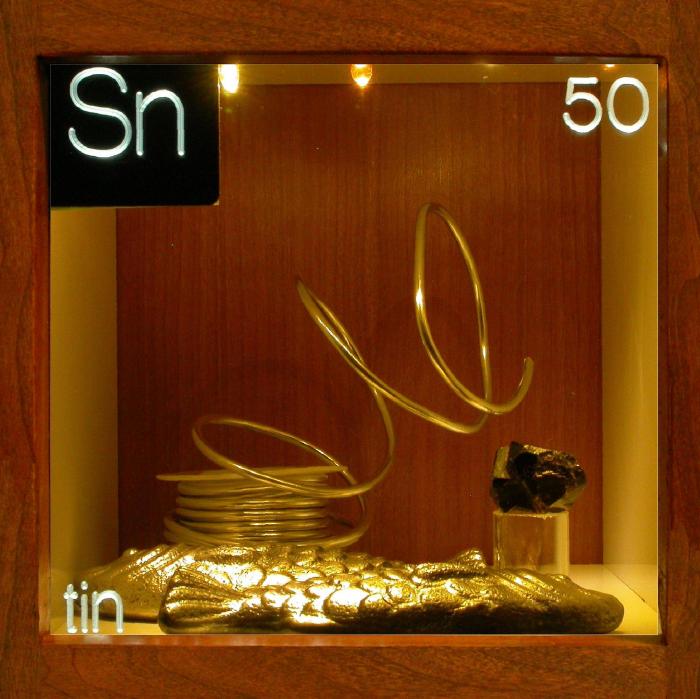Home Size: 1 2 3 4 5 6 7 8 9
|
 |
| A soft, shiny silver white metal that is protected from tarnishing by a thin oxide layer. Widely used to plate steel for canning.
|
|
|
 |
Fish.
Tin melts at a conveniently low 232 degrees centigrade and so makes an excellent metal for casting as our tin fish demonstrates. Its low melting point makes possible tin's unusual use as a perfectly flat support for making glass in the Pilkington process. A thin layer of molten glass floats over liquid tin and the temperature is reduced until the glass solidifies.
Source: specially produced
Size: 5"
Purity: 99.9%
|
|
 |
Plumbing solder.
Ordinary solder is an alloy of tin to lead in the ratio 1 to 3. These days lead-free solder is also available using other low melting point materials that are less toxic than lead, such as gallium and bismuth.
Source: Hardware store
Size: diameter 0.2"
Purity: 66%
|
|
 |
Cassiterite.
Cassiterite, from kassiteros the Greek word for tin, is the most important tin ore and has been smelted for thousands of years. Indeed the smelting of cassiterite mixed with copper ores led to the discovery of bronze, a metal superior to both tin and copper, kick starting the Bronze Age. Most cassiterite is mined as massive or fibrous aggregates, disseminated ores or from alluvial placers but it can also form beautiful lustrous crystals. Its color ranges from brown to black and it can be opaque, translucent or transparent.
Source: Mackay mineral collection
Size: 0.75"
Purity: 78%
|
|

